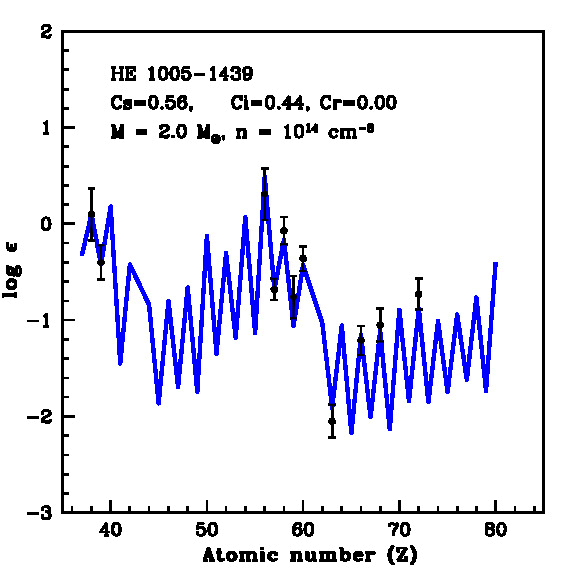A new star has struck at the roots of scientist’s previous understanding of star formation processes by showing signs of having formed through the combination of two different processes earlier thought to occur in different astrophysical environments. It can help understand how different star formation processes influence the elemental composition of stars.
Elements beyond iron are created due to reactions in nuclear astrophysics called neutron capture processes. The slow (s-) process is believed to occur in low-mass stars during the asymptotic giant branch (AGB) phase and the rapid (r-) process is believed to occur in Supernovae and Neutron Star mergers. One of the proposed sites for intermediate (i-) process is low-metallicity low-mass AGB stars. Understanding the relative contributions of these processes to the elemental composition of stars is important for understanding the chemical evolution of galaxies and the origins of the elements in the universe.
Scientists at the Indian Institute of Astrophysics (IIA, Bangalore), an autonomous institute under the Department of Science & Technology (DST), Govt. of India, have discovered a unique star named HE 1005-1439 classified as a carbon-enhanced metal-poor (CEMP) star. The star which defies previous classifications and challenges previous understanding of star formation processes shows signs of having been formed through the combination of two different neutron-capture processes --- the slow (s-) and intermediate (i-) neutron-capture processes.
The research at IIA, by Partha Pratim Goswami and supervised by Prof. Aruna Goswami, used high-resolution spectroscopic data acquired using High Dispersion Spectrograph (HDS) attached to SUBARU telescope (Japan) to analyze the star's surface chemical composition. The team found that the iron content of the star is thousand times less than that of the sun and it is heavily enriched with neutron-capture elements.
As the observed elemental abundances could not be explained based on theoretical s-, r-, or i-process model predictions alone, the researchers performed a parametric-model-based analysis of the abundances of the heavy elements to understand the origin of the observed abundance pattern. This led to the discovery of a new class of object with a distinct abundance pattern. The study was published in the peer-reviewed scientific journal Astronomy and Astrophysics (A&A).
“For the first time, we came across an object with a surface chemical composition that exhibits contributions from both slow(s) and intermediate (i) neutron-capture nucleosynthesis. The observed abundance pattern is quite unique and has never been observed before in any CEMP stars. Our analysis clearly indicates that the star’s surface chemical composition is being influenced by similar contributions from both the s- and i-process. The s- and i-process occur in different astrophysical environments, and hence, the surface chemical composition of HE 1005-1439 being influenced by both two processes seemed quite surprising,” said Partha Pratim Goswami who led this work.
Explaining the peculiar abundance pattern, Prof. Aruna Goswami said, “We have noted variations in our radial velocity estimates obtained from several epochs that indicate the presence of a binary companion. Based on this observation, we proposed a formation scenario for HE 1005-1439 involving mass transfer from a now extinct asymptotic giant branch (AGB) companion where both i- and s-process nucleosynthesis took place during various stages of the AGB evolution”
The results can also help to understand the conditions resulting in a pure s- or i-process surface abundance pattern in low-mass, low metallicity AGB stars. This scenario can be helpful in explaining the smooth transition of elemental abundances from the CEMP-s to CEMP-r/s regime.

Figure 1: Best-fit from parametric-model with the observed abundances of HE 1005-1439. The points with error bars indicate the observed abundances. Here, Cs, Ci, and Cr indicate the component coefficients corresponding to contributions from the s-process, i-process, and r-process, respectively. The best fit is achieved for a combination of an s-process model with stellar mass M = 2 solar mass, and an i-process model with neutron density n = 1014 cm-3 , with no contribution from the r-process. The parametric-model function gives an excellent fit to the light s-process elements Sr and Y and a satisfactory fit to the heavier neutron-capture elements.
Paper link: https://ui.adsabs.harvard.edu/abs/2022A%26A...657A..50G/abstract
For more information, Contact:
Mr. Partha PratimGoswami (Email:partha.pg[at]iiap[dot]res[dot]in)
Prof. ArunaGoswami (Email:aruna[at]iiap[dot]res[dot]in).






























